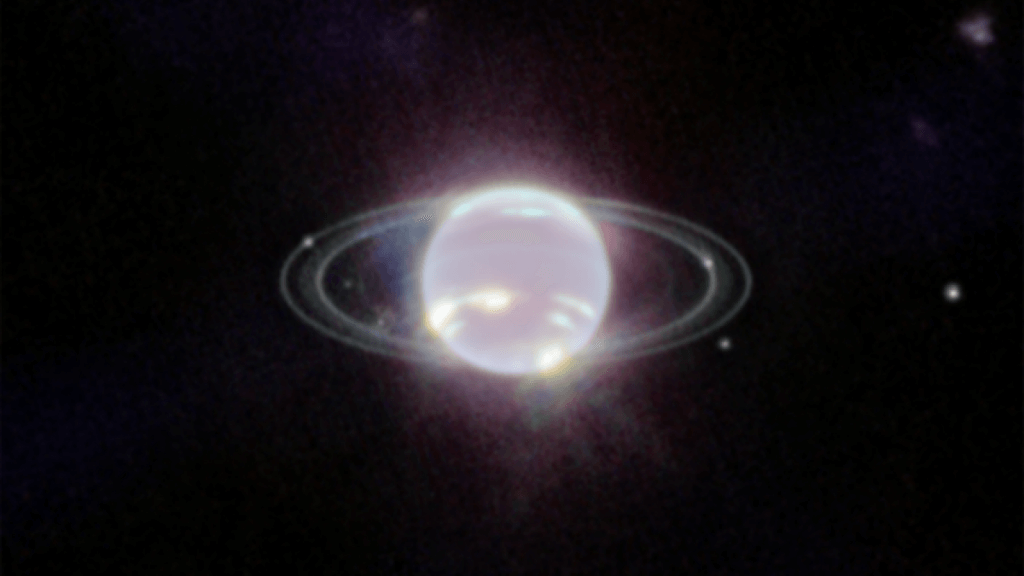Of all the nearby planets, Saturn is most famous for its prominent rings. But NASA‘s James Webb Space Telescope is reminding astronomers that Neptune’s got bling, too.
A new telescope image shows Neptune, which often looks like a gigantic blue ball on an opaque background of blank space, as a darkened sphere with delicate hoops of dust and a scattering of moons. As with all of Webb’s photos in infrared light (a type of light that’s invisible to our eyes), it is surrounded by never-before-seen galaxies billions of light-years away.
Astronomers say the new photo is the clearest shot of the ice-giant planet taken in more than 30 years. Neptune’s ghostly rings, some of which haven’t been detected since Voyager 2 spotted them as it flew past in 1989, are on display. The pictures also reveal for the first time a band of clouds around a known vortex at the planet’s south pole.
Such vivid imagery taken of this solar system demonstrates the $10 billion telescope’s ability to collect extraordinary data not just of the distant universe — its main purpose — but of celestial objects closer to home. Scientists believe Webb will unleash a golden age in our understanding of the cosmos.
“Not gonna lie. I ugly-cried when I saw THE FIRST JWST NEPTUNE IMAGES!” said Heidi Hammel, a Webb interdisciplinary scientist and Neptune expert, on Twitter. “‘O M G – LOOK AT THE RINGS’ I was yelling, making my kids, my mom, even my cats look. More than 20 years in the making, and JWST delivered.”
Want more science and tech news delivered straight to your inbox? Sign up for Mashable’s Top Stories newsletter today.
Unless you’re a Pluto truther, Neptune is the most distant planet in the solar system. In fact, even if Pluto were still considered the ninth planet, Neptune is still at times farther from the sun. It takes about 165 years for Neptune to make a loop around the star and is not visible to the naked eye. Yet if Earth were the size of a nickel, the ice giant would be as big as a basketball, according to the Space Telescope Science Institute in Maryland.
It’s a dark, blustery world, whipped by winds faster than the speed of sound and only getting a dim twilight’s worth of sun at its high noon.
In Webb’s photo shoot on July 12, the telescope’s near-infrared camera captured the planet’s turbulent, windy atmosphere. The most prominent features are bright splotches in its lower half that indicate lofty methane ice clouds, according to the institute.
The Hubble Space Telescope’s previous pictures of Neptune show the far-flung behemoth as a bright blue sphere because traces of methane gas register blue at visible wavelengths. But because methane strongly absorbs red and infrared light, it seems relatively dark through Webb’s eyes.

